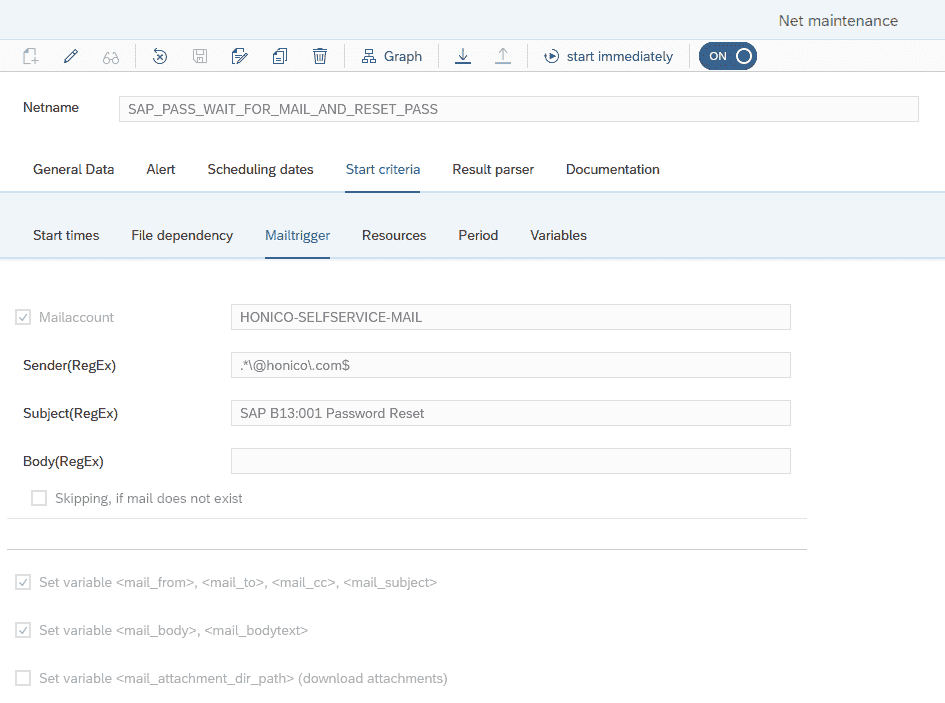One of the daily tasks of a service desk is unlocking users or resetting their password. This quickly leads to a demand for a self-service procedure. Therefore we will show you a simple approach on how to set up a self-service for the SAP password reset with the Easy Workload Scheduler.
Instructions Password Reset with the Easy Workload Scheduler
The workflow looks like this:
- Send reset mail to mailbox
- Receive confirmation email
- Send back confirmation mail
- Password Reset and Unlock done
Reset Send mail to mailbox
For this purpose, we combine several features of the Easy Workload Scheduler: the mailbox trigger, variables and scripting in one net.
With the mail trigger we monitor an incoming mailbox and become active depending on further criteria. An SAP user can send an e-mail to a mailbox set up for such cases.
The network only starts up if the sender of the e-mail comes from our domain and the subject line is filled accordingly.

Receive confirmation email
The sender will now receive an e-mail with a token which he has to send back. This ensures that he is the owner of the mailbox. The token is generated and stored using the script function.



Send back confirmation mail
After the sender has returned the email with the token, our network receives this email and the token is checked.
Password Reset and Unlock is done.
In the SAP system, a new password is now set for this user and the lock is removed if necessary. We use the EWS REST interface to call SAP function modules.
Requirements in SAP for EWS REST-Interface.
Activation of web services in the SAP system for BAPIs
- Release via SOAP interface or set up individually as business services
- Used RFCs/BAPIs:
- RFC_READ_TABLE
- BAPI_USER_CHANGE
- BAPI_USER_UNLOCK


The details can be found in the complete program code export in JSON format. You can import this into EWS as a net.
The jobs and server connections are imported as well. Then only the server connections and e-mail addresses have to be replaced accordingly.
The example can then be extended to your requirements, e.g. sending alerts to the service desk for auditing purposes or alternatively to offer an unlocking only.
